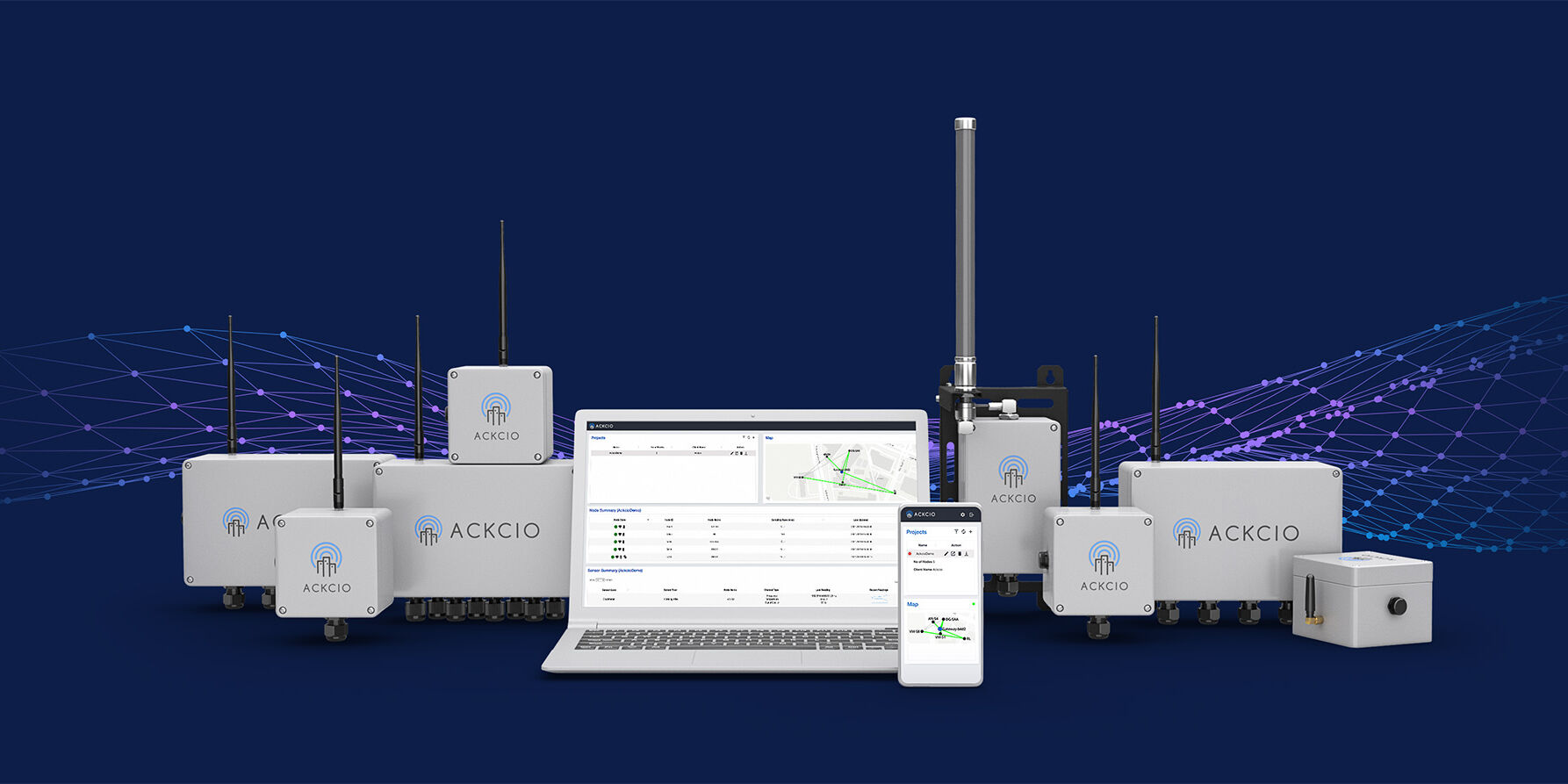Ackcio Beam – Reliability at Its Core

Monitoring of geotechnical and structural sensors is essential for maintaining safety and productivity during infrastructure operations. Through the use of wireless technologies, this process can be carried out successfully and cost-effectively, however, a key requirement for wireless monitoring solutions is the reliability of sensor data communications.
One of the key reasons why IoT has not been prevalent in this industry is due to the lack of trust in “battery” operated wireless data loggers. With the recent advancements made in electronics, IoT devices boast micro and nano amperes of energy consumptions and can last for years on batteries. This alleviates the fear of relying on batteries for long-term monitoring, however, wireless connectivity is still prone to intermittent data losses. Data loss could be transient due to signal interference from other networks or due to long-term physical obstructions. In either case, the critical geotechnical sensor data is unable to reach the central data aggregation device, often called Gateway from the edge devices, often called Nodes.
To tackle data losses, traditional wireless Nodes have a standard weapon – retransmissions, which allows multiple retransmissions (often up to three retransmissions for each data reading) to ensure high reliability, but it is not failproof. In situations where multiple retransmissions are still not successful in delivering the sensor data to the Gateway, Nodes have limited onboard memory that is used to log a local copy of sensor data. This can be later retrieved physically by visiting the Nodes on the site, however, this demands a trip to the project site that could have hundreds if not thousands of Nodes, making the entire process extremely costly, tedious and impractical, especially if the deployments are remote.
In the case of remote sites, visits need to be planned days in advance and can cost thousands of dollars. Worst of all, some of the installations are so difficult to access that it makes physical retrieval nearly impossible.
Ackcio Beam has been designed with reliability at its core. We follow a three-tier approach to ensure over 99% reliable end-to-end data communication using our long-range multi-hop mesh network.
Ackcio Nodes’ Flash Memory
Every Ackcio Node comes with 8MB onboard memory where each periodic sensor reading is stored as a backup. Information gets overwritten in a round-robin manner, ensuring that a local copy of all the time-stamped sensor reading is persisted, regardless of the quality of the wireless network links. Users can use our Android application to export the readings stored on the flash data in a CSV format whenever required.
Ackcio Gateway’s Flash Memory
Ackcio Gateway operates in a unique low-power mode whenever the main 12V power supply is not available. This enables the Gateway to continue receiving sensor data and persist locally in onboard flash memory until the main power comes back. This allows the Gateway to keep sensor data for up to four months, and all data can be saved automatically in the Gateway’s main memory once the Gateway regains main power.
Ackcio Gateway’s Main Memory
Every Gateway comes with an additional 16GB of memory where sensor data from the entire project is stored permanently. Gateway’s Snape server software, which manages the API/FTP pushes to third-party servers, ensures that all the sensor data that failed to be uploaded due to intermittent Internet connectivity issues or server issues, get uploaded again at a later point in time. Also, remote access features like DDNS allow data to be retrieved over the Internet.
New Developments
We have newly released some features that help to increase the reliability of our system even further.
- Background Sync
The January release sees another enhancement to our Ackcio Mesh 5.X firmware. It now comes with a seamless background sync algorithm. If a Node is connected to the network it will continue to forward the data towards the Gateway as well as store it on the Node’s onboard flash memory. In case the Node has not been able to join the network due to interference or obstructions, the firmware now has the ability to save the data on the Node’s onboard flash memory and also record the event that it failed to forward the data. Periodically, the Node will scan its memory for unsuccessful sensor data transmission entries and attempt to resend them to ensure that all the pending sensor data has been communicated towards the Gateway successfully. This provides every sensor data with multiple communication opportunities. Given that the transmission is spread out over time, it makes the system resilient to transient disturbances in the network that have seen bursty sensor data losses previously.
With this latest firmware release, it is now possible to eliminate the need for visiting the site for manual data retrieval from the Nodes since any data not transmitted successfully would be synchronised in the background without affecting the real-time sensor data collection.
- Hardware Watchdog
Watchdog services are commonly found in equipment installed in remote locations where people cannot easily access or react to faults in a timely manner. With our devices getting installed in harsh and remote environments, there was an increasing demand for a self-recovery mechanism. With the newly released Watchdog services, our devices become self-reliant and automatically recover in the unlikely event where they would hang.
- Remote Access
Remote troubleshooting adds enormous value to a user given that most deployments happen in remote locations. However, obtaining a public IP sim card (both static and dynamic IP) for direct remote access is becoming increasingly difficult in many countries. With our latest Snape software update, it is now possible to get remote access even if the Gateway is using a private IP sim card. This new easy-to-configure remote access feature provides you with 24×7 access to the Ackcio Beam network through the Gateway regardless of which type of Internet connection it has been provided with.
As communication within IoT monitoring systems continues to advance, they will inspire greater trust within decision-makers to use these systems for monitoring various construction and mining projects. At Ackcio, we hope that our advanced communication technology with the latest unparalleled reliability upgrades will spearhead this technological shift and add value to both upcoming and existing Ackcio Beam deployments.


